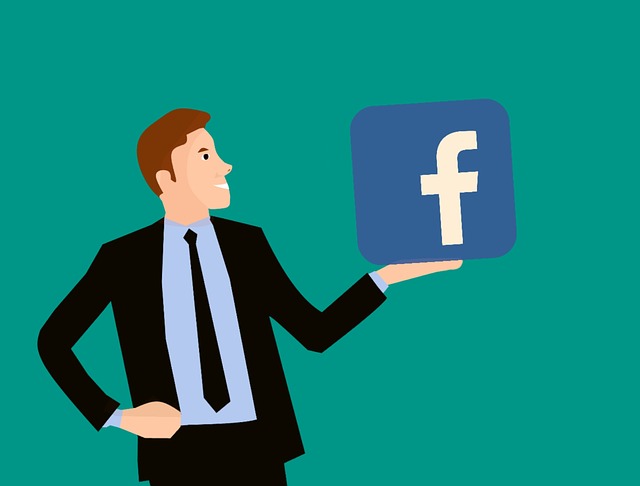
Streaming radio ads is a great way get your brand out to a new audience. They are also a more effective and less expensive way to reach a targeted audience than traditional radio ads. Spotify's advertising platform makes it easy to target specific playlists and audiences. Its ad options are also very flexible.
Spotify offers two ad options for marketers: audio and display. The first is an audio ad that is 15 to 30 seconds long and is served between songs. The second is a display ad, which is a picture overlay that shows up as a clickable ad. Both are great ways to interact with customers and drive traffic to your website.
You have the option to record your own audio ads or hire a professional recording company to create one for you. Spotify Ad Studio offers a self service ad manager, where you can create your custom ad in just 24 hours. It also gives detailed metrics, such as reach and frequency and budgets. Ad completion rates, ad delivery statistics, and reach.

Spotify allows you to promote your podcast, cooking show or podcast. This will allow to target your audience and make sure that they hear what you have to say. You can target audience members by music genre, playlist and voiceover script, unlike traditional radio ads. The minimum charge is $250 and the $15-25 CPM.
Apart from audio ads, the app also allows you to run videos advertisements. These could be full-screen video ads, videos that display between songs, or a 24-hour homepage takeover. You can also make a Takeover video. It's a full-screen video only available to people who have the app open.
Radio is still the best way to get your message across, but digital radio is rapidly catching up. With a growing audience and more targeted ads, you can quickly drill down and locate specific zip codes. This will increase your brand's visibility.
Adidas, for instance, launched a campaign to promote the Nite Jogger shoe on Spotify. The ads featured a nighttime theme and a customized digital experience. Nine million people viewed their ads. Google also launched a B2B podcast advertisement campaign on the platform. This was a highly successful marketing strategy.

Spotify Ads Studio allows you to quickly get started. You can quickly get a report about your ad's performance by submitting a short description of it. These reports include ad completion rates, ad delivery metrics, ad statistics, and a summary of your ad campaign.
While creating your own ads can be daunting, Spotify Ads Studio can make it simple. A high-quality, audio ad is most likely to get heard by many people. Make sure you do your best.
FAQ
What is branding?
Your brand is the way you express who you are and what your stand for. It's how you make people remember you when they hear your name.
Branding refers to creating a brand that is memorable for your company. A brand does not only include a logo, but includes everything that you look like and how your voice is used by employees.
Because customers know exactly what they are getting, strong brands help them feel confident in purchasing from you. And it gives them confidence in choosing your products over those of competitors.
Apple is a prime example of a company with a strong brand. Apple is a globally recognized brand because of its beautiful design, high-quality product lines, and friendly customer service.
Apple's brand is synonymous with technology. Apple is synonymous with technology.
If you're considering starting a new business, you should consider developing a brand before launching. This will give you and your business a face.
Advertising what is it?
Advertising is an art. It's more than just selling products. It's about building emotional bonds between brands and people.
Advertising is all about telling stories with images and communicating ideas.
It is important to communicate clearly and persuasively. Also, you must share a story which resonates with your target markets.
This makes advertising different from other forms of communication, such as public speaking, writing, or presentations.
You are building a brand identity when you run a successful advertising campaign.
This is how to be remembered. You become someone that people remember.
How can I choose my target audience
Start with yourself, and the people closest to you. If you don't know where to begin, ask yourself, "who am I trying to reach?"
Ask yourself these questions: Who do you consider the most influential in your industry? What are their biggest challenges? Which people are the most intelligent in my industry? Where can they be found online?
Return to the beginning. What motivated you to start your business? How did you solve the problem?
These answers will help you identify who your ideal clients are. You'll also learn more about what makes them tick and why they buy from you.
Look at your competitors' sites and social media pages for clues as to who they cater.
Once you have identified the target customers, it is time to decide what channel(s) you want to use to reach them. An example: If you provide services to realty agents, you may create an informational website for home buyers.
If your company provides software to small businesses, you might consider creating a blog for those owners.
A Facebook page for teens could be set up if you are a clothing seller. If you own a restaurant, you can set up a twitter account to provide information for parents searching for child-friendly options.
It is important to remember that there are many methods of getting your message across.
What is the best way to advertise in print?
Print advertising is an effective medium for communicating with consumers. It is used by many companies for promoting products and services. Its main purpose is to grab the attention of consumers.
Print ads are typically one page long and include text, images, logos and other graphics. They may also include sound, animation, video, and hyperlinks.
Here are the main types and classifications of print advertising:
1. Brochures - Large format printed brochures are used to draw people in to stores. Brochures can often be adorned with brightly colored images and eye-catching designs.
2. Catalogues - These are smaller versions of brochures. These are often sent to customers who have asked for information on particular items.
3. Flyers - These are small pieces of paper distributed at events such as concerts and fairs. Flyers can be handed out at retail outlets for a small fee, but are generally free.
4. Flyers are also available in posters. These flyers can be displayed on buildings, fences and walls. They are usually made using computer software programs, which is designed to draw the eye of passersby.
5. Direct mail – These are direct mail letters and postcards sent to potential customers. These are sent periodically by companies to remind current customers about their business.
6. Newspaper Ads are placed in newspapers and magazines. They are usually quite long and contain both text and images.
What is the cost of advertising on social media?
If you decide to go this route, you should know that social media advertising is not free. You will be charged monthly based on how much time you spend on each platform.
Facebook: $0.10 per 1,000 impressions
Twitter - $0.20 for 1,000 impressions (if tweeting)
Linkedin - $0.30 for 1,000 impressions if your send out invitations
Instagram: $0.50 per 1,000 impressions
Snapchat – $0.60 per 1,000 impressions ($0.40 for each user)
YouTube - $0.25 per 1,000 views
Tumblr: $0.15 per 1,000 impressions of text posts
Pinterest - $0.05 per 1,000 impressions per month
Google+ - $0.15 to $0.0.20 per 1,000,000 impressions
Tumblr - $0.15- $0.20 per 100,000 impressions
Vimeo – $0.20- $0.25 Per 10,000 Impressions
Soundcloud - $0.20 to $0.0.25 per 1 Million Plays
StumbleUpon - $0.20 -$0.25 per 1 billion pageviews
Digg - $0.20- $0.25 for 1000 diggs
Reddit – $0.20-$0.25 Per 1000 Comments
Wordpress - $0.20--$0.25 per 500 comments
Flickr - $0.20 -- $0.25 per 5,000 photo uploads
What should you know about radio advertising
It is important that you understand the differences between media. It is important to understand that all media forms are complementary and not competitive.
Radio is best used as an extension of television advertising. Radio complements television advertising by reinforcing key messages or providing additional information.
Radio listeners often find TV commercials too lengthy. Radio ads are typically shorter and less costly.
What is an advertising buyer?
Advertisers buy advertising space on television, radio, and print media.
Advertisers pay for the time their message appears.
They don't necessarily seek the best ad; they want to reach their target markets with the most effective ad.
An advertiser might have details about potential customers, including their age, gender and income.
This information can be used by advertisers to decide which media works best for them. For example, they might decide that direct mail would be more effective with older audiences.
Advertisers also look at the competition. If there are similar businesses nearby, they might choose to place their ads near those competitors.
Advertisers should also consider the budget they have and how long they plan to spend it before it expires.
Statistics
- Worldwide spending on advertising in 2015 amounted to an estimated US$529.43 billion. (en.wikipedia.org)
- Advertising spending as a share of GDP was about 2.9 percent. (en.wikipedia.org)
- In 1919 it was 2.5 percent of gross domestic product (GDP) in the US, and it averaged 2.2 percent of GDP between then and at least 2007, though it may have declined dramatically since the Great Recession. (en.wikipedia.org)
- Nonetheless, advertising spending as a share of GDP was slightly lower – about 2.4 percent. (en.wikipedia.org)
External Links
How To
How to run ads that are paid
Paid Advertising is any marketing activity that involves paying money. This could include buying ad space on websites, placing advertisements in newspapers or magazines, or paying someone to promote your business online. You can also pay for paid advertising through email marketing, social media, display advertising and search engine optimization (SEO), as well as mobile app promotion and influencer marketing.
To ensure your campaign works well, you should know how much it costs and what kind of results you expect. Also, consider whether you can get enough return-on-investment (ROI), to justify the expense.
Before you begin a paid advertisement campaign, first determine if there are potential customers for your product/service. If you have no idea, then start with free advertising like posting flyers around your neighborhood, making announcements at school, or sharing your message through social media sites.
Once you know your target audience, you can decide on the best way to reach them. Advertise in local newspapers if you are selling organic foods. For cosmetics sales, it might be more advantageous to advertise on radio and TV.
Once you have decided who you want to reach out to, it is time to determine how much money you are willing to spend. There are many ways you can calculate your budget. You can divide your budget into daily, weekly and monthly amounts. To make it easier, you can use a spreadsheet program.